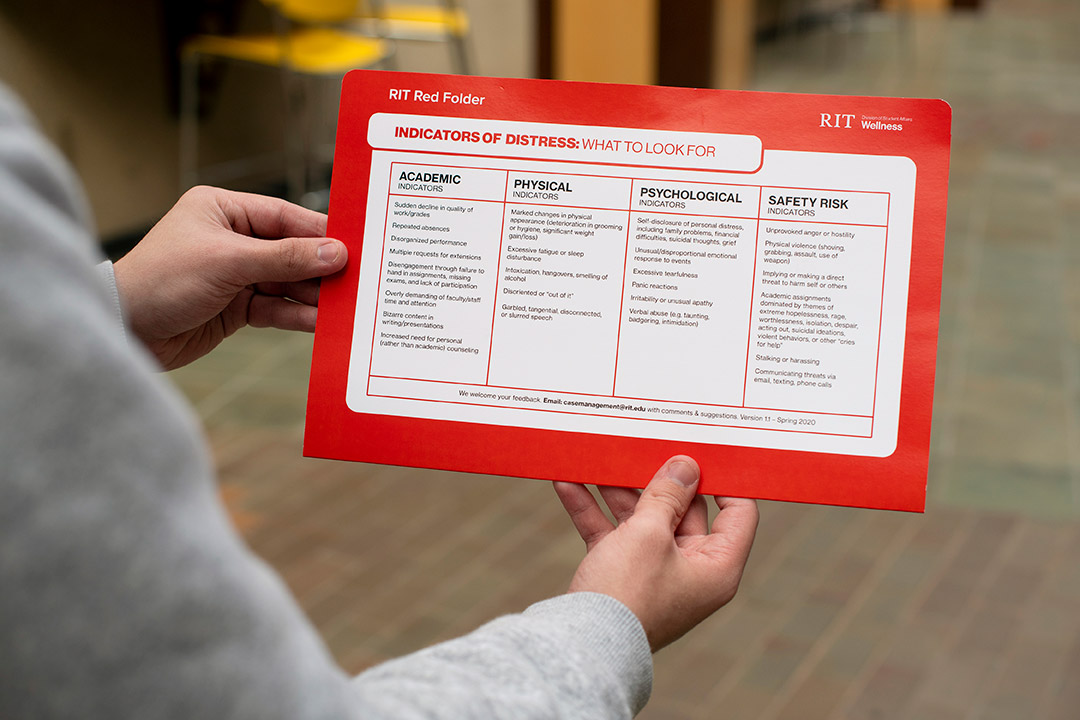Red Folder program aims to identify, help students in distress
Faculty and staff encouraged to offer resources if trouble with students detected
A. Sue Weisler
The Red Folder helps identify students in distress and provide resources available to help them.
There’s enough stress being a young adult and college student, but throw in a global pandemic, and stress levels are bound to rise.
A new resource is available at Rochester Institute of Technology to help faculty and staff find information about common indicators of student distress. Called the “Red Folder,” it offers tips on how to best help a student in distress by providing a decision tree and detailed list of resources on and off campus.
“There’s increased stress due to the pandemic. We can all feel that,” said Megan Jaros, manager of RIT Wellness’s case management department. “This resource can give faculty and staff, who are also under stress, a reference guide to how they can respond to a distressed student and how they can refer students to services.”
The Red Folder lists indicators of distress, including academic indicators (repeated absences, sudden decline in quality of work or grades, multiple requests for extensions); physical indicators (excessive fatigue, marked changes in appearance, grooming or hygiene, garbled or slurred speech); psychological indicators (panic reactions, disclosure of personal distress, irritability); and safety risk indicators (unprovoked hostility, threats, stalking or harassing).
It also suggests what faculty and staff should and should not do if they suspect a student is distressed.
The Red Folder is a national initiative in higher education and began at RIT this semester as a partnership between Health Promotion and RIT’s Counseling Center and is found on RIT’s Reporting an Incident page.
David Reetz, director of RIT’s Counseling and Psychological Services, said from fall 2015 to spring 2020, the number of students served by his department increased from 1,300 to more than 2,200. At the same time, the number of hours providing mental health education to faculty, staff, and students increased from 65 hours annually to nearly 700 hours annually and the number of mental health staff has increased.
Jaros said the Red Folder initiative will remain in place long after the pandemic has ended.
“This is a resource that will be here all the time. There’s a lot of history of faculty and staff wanting to support students on our campus,” she said.














